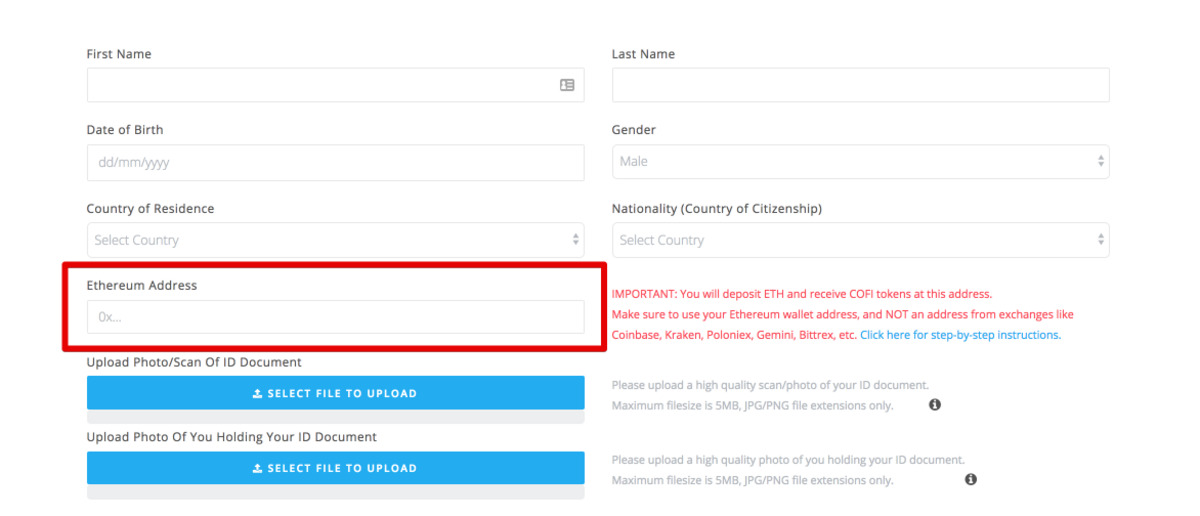How Does Ethereum Address Work?
Ethereum addresses are unique identifiers that are used to send and receive Ether, the cryptocurrency of the Ethereum network. They are similar to the bank account numbers used in traditional banking systems. Understanding how Ethereum addresses work is crucial for anyone interested in using Ethereum or participating in transactions on the network.
At the core of an Ethereum address is a cryptographic algorithm that generates a public key and a private key. The public key, which is derived from the private key, is the portion of the address that is shared with others. It serves as the destination for Ether transactions and can be freely shared without compromising security.
The private key, on the other hand, should be kept securely and not shared with anyone. It is used to sign transactions, providing proof of ownership and ensuring the integrity of the transactions. The private key is essentially the key that unlocks access to the funds associated with the Ethereum address.
Ethereum addresses are typically represented as a string of alphanumeric characters, starting with “0x”. The length of an Ethereum address is 42 characters. However, it is important to note that Ethereum also uses a checksum mechanism to validate the address format, adding an additional layer of security.
There are two main types of Ethereum addresses: externally owned addresses (EOAs) and contract addresses. EOAs are controlled by private keys and are typically used by individuals to send and receive Ether. Contract addresses, as the name suggests, are associated with smart contracts, which are self-executing contracts with the terms of the agreement directly written into the code.
To create an Ethereum address, a user needs to generate a random private key. This can be done using various methods, such as software wallets, hardware wallets, or even manually generating one. From the private key, the corresponding public key and Ethereum address can be derived using cryptographic algorithms.
When using an Ethereum address, security measures should be taken to protect the private key. This includes using strong, unique passwords, enabling two-factor authentication, and storing the private key offline in a secure location. It is important to remember that if the private key is lost or compromised, access to the associated funds will be permanently lost.
In summary, Ethereum addresses utilize a cryptographic algorithm to generate a public key and a private key. The public key, represented by the Ethereum address, is shared with others to receive Ether, while the private key is kept secure to sign transactions and access the associated funds. Understanding the workings of Ethereum addresses is crucial for safe and secure participation in the Ethereum ecosystem.
Public Key and Private Key
Public key cryptography forms the foundation of Ethereum addresses. It involves the use of a pair of cryptographic keys – a public key and a private key – to secure transactions and verify ownership of digital assets. Understanding the concepts of public and private keys is essential to comprehend the inner workings of Ethereum addresses.
A public key is a cryptographic key that is derived from the private key. It is represented as a string of alphanumeric characters and serves as the address to which cryptocurrency can be sent. Public keys are freely shared with others and do not compromise the security of the Ethereum address.
On the other hand, a private key is a secret piece of information that is generated randomly and is known only to the owner. It is crucial to keep the private key secure, as it is used to digitally sign transactions. By signing a transaction with the private key, a user can provide proof of ownership and ensure the integrity of the transaction.
The relationship between the public key and the private key is one-way. While the public key can be derived from the private key, it is computationally infeasible to determine the private key from the public key. This property ensures the security and confidentiality of the private key.
When a sender initiates a transaction on the Ethereum network, they will use their private key to sign the transaction. The transaction is then broadcasted to the network, along with the sender’s public key, to verify the authenticity and integrity of the transaction. The recipient of the transaction can use the sender’s public key to decrypt the signature and verify its validity.
It is important to note that the security of an Ethereum address is directly linked to the security of the private key. If the private key is compromised or lost, unauthorized access to the associated funds can occur. Therefore, it is crucial to take appropriate security measures to protect the private key, such as using hardware wallets, implementing strong passwords, and employing multi-factor authentication.
In summary, Ethereum addresses are secured using public key cryptography. The public key, derived from the private key, serves as the address to receive cryptocurrency, while the private key is used to sign transactions and prove ownership. By understanding the concepts of public and private keys, users can take the necessary steps to safeguard their Ethereum addresses and ensure the security of their digital assets.
What Are the Different Types of Ethereum Addresses?
Within the Ethereum ecosystem, there are two main types of addresses: externally owned addresses (EOAs) and contract addresses. Each type of address serves a specific purpose and is associated with different functionalities on the Ethereum network.
Externally owned addresses, often referred to as EOAs, are the most common type of Ethereum address. They are controlled by private keys and are typically used by individuals to send and receive Ether, the native cryptocurrency of the Ethereum network. EOAs have the ability to initiate transactions, sign messages, and participate in various functions of the Ethereum network.
Contract addresses, as the name implies, are associated with smart contracts. Smart contracts are self-executing agreements with the terms of the contract directly written into the code. Contract addresses are generated when a smart contract is deployed on the Ethereum network.
Unlike EOAs, contract addresses do not have private keys or the ability to sign transactions. Instead, they are controlled by the logic and rules coded into the smart contract. When interacting with a smart contract, users typically send transactions to the contract address, triggering the execution of the predefined functions within the contract.
Contract addresses play a crucial role in decentralized applications (dapps) built on the Ethereum platform. These dapps utilize smart contracts to automate processes, facilitate transactions, and ensure transparency and security. Examples of dapps include decentralized finance (DeFi) platforms, NFT marketplaces, and decentralized exchanges (DEXs).
It is important to note that Ethereum addresses are represented as a string of alphanumeric characters, typically starting with “0x”. The length of an Ethereum address is 42 characters. However, to enhance security, Ethereum also implements a checksum mechanism. This mechanism adds an additional layer of validation to ensure that the address is entered correctly.
Using the checksum mechanism, Ethereum addresses include capital letters in a specific pattern. This pattern is derived from applying a mathematical algorithm to the address. When entering an Ethereum address, users can verify its validity by ensuring that the capital letters are in the correct positions according to the checksum.
In summary, there are two main types of Ethereum addresses: externally owned addresses (EOAs) and contract addresses. EOAs are controlled by private keys and are used by individuals to send and receive Ether. Contract addresses, on the other hand, are associated with smart contracts and play a key role in decentralized applications. Understanding the different types of Ethereum addresses is essential for effectively interacting with the Ethereum network and participating in various functionalities.
How to Create an Ethereum Address?
Creating an Ethereum address is a straightforward process that involves generating a private key and deriving the corresponding public key and Ethereum address. There are several methods available to create an Ethereum address, ranging from software wallets to hardware wallets.
Here is a general overview of the steps involved in creating an Ethereum address:
- Choose a Wallet: Select a wallet that suits your needs. There are various options available, including desktop wallets, mobile wallets, online wallets, and hardware wallets. Each type of wallet offers different features, levels of security, and user interfaces.
- Download or Access the Wallet: Depending on the type of wallet chosen, download the wallet software or access the online wallet platform. Ensure that you are obtaining the wallet from a trusted and reputable source.
- Set Up the Wallet: Follow the instructions provided by the wallet software or platform to set up your wallet. This usually involves creating a strong password and taking note of the wallet’s backup phrases or seed words. These backup phrases are crucial in case you need to recover your wallet.
- Generate Private Key: Once your wallet is set up, it will automatically generate a private key. This key is a random series of numbers and letters and should be kept secure and secret. Be sure to follow any provided instructions for safeguarding the private key.
- Derive the Public Key: From the private key, the wallet software will derive the corresponding public key. The public key is used to generate the Ethereum address.
- Obtain the Ethereum Address: The Ethereum address is derived from the public key. It is typically represented as a string of alphanumeric characters and starts with “0x”. The Ethereum address is what you will share with others to receive Ether or participate in transactions on the Ethereum network.
- Back Up and Secure Your Ethereum Address: It is important to create a backup of your Ethereum address, including the private key and any provided backup phrases or seed words. Store this information securely and offline, such as in a hardware wallet or on paper.
It is worth noting that when creating an Ethereum address, it is crucial to use strong passwords, enable additional security features provided by the wallet, and be cautious of phishing attempts or malicious software that could compromise your wallet and private key.
By following these steps and taking appropriate security measures, you can create an Ethereum address and begin securely participating in the Ethereum network.
Security Measures for Ethereum Addresses
Ensuring the security of your Ethereum address is of utmost importance to protect your digital assets and prevent unauthorized access. By following certain security measures, you can significantly reduce the risk of hacking, theft, and loss of funds associated with your Ethereum address.
Here are some essential security measures to consider:
- Use Strong and Unique Passwords: When creating your Ethereum wallet or accessing your account, use strong and unique passwords. Avoid using easily guessable passwords and consider utilizing a password manager to securely store them.
- Enable Two-Factor Authentication (2FA): Many wallet providers offer the option to enable two-factor authentication. By activating this feature, you add an extra layer of security requiring a second authentication factor, such as a verification code sent to your mobile device, in addition to your password.
- Keep Software Up to Date: Ensure that your wallet software, operating system, and any associated applications are regularly updated. Software updates often include security patches that address vulnerabilities and protect against known threats.
- Secure your Private Key: The private key associated with your Ethereum address is a sensitive piece of information. Store it securely, preferably offline, such as in a hardware wallet, a secure USB drive, or encrypted storage. Avoid sharing your private key with anyone and be cautious of phishing attempts.
- Backup Your Ethereum Address: Regularly create backups of your Ethereum address, including the private key and any provided backup phrases or seed words. Keep these backups in a safe and offline location to prevent loss in case of hardware failure or other unforeseen circumstances.
- Be Wary of Phishing Attempts: Be vigilant and cautious of phishing attempts, which involve fraudulent emails, websites, or messages designed to trick you into revealing your private key or other sensitive information. Always double-check the URLs and sources of communication, and never enter your private key on untrusted platforms.
- Consider Hardware Wallets: Hardware wallets provide an extra layer of security by storing your private key offline on a physical device. These wallets are designed to protect against malware and hacking attempts, offering a secure way to manage and store your Ethereum address.
- Keep Your Device Secure: Ensure that the device you use to access your Ethereum address is secure. Use antivirus software, keep the device locked with a strong password, and be cautious of the networks you connect to, especially public Wi-Fi networks.
By implementing these security measures, you can greatly enhance the protection of your Ethereum address and minimize the risk of unauthorized access and potential loss of funds.
How to Use an Ethereum Address?
Once you have created an Ethereum address, you can begin using it to send and receive Ether, participate in transactions, and interact with decentralized applications (dapps) on the Ethereum network. Understanding how to use an Ethereum address is essential for seamless integration into the Ethereum ecosystem.
Here is a step-by-step guide on how to use an Ethereum address:
- Receiving Ether: To receive Ether, simply provide your Ethereum address to the sender. You can share your Ethereum address through various means, such as copying and pasting it, sharing a QR code, or using a payment request feature provided by your wallet software.
- Sending Ether: To send Ether, you will need the recipient’s Ethereum address. Enter their address in the designated field of your wallet software or platform, specify the amount of Ether you want to send, and confirm the transaction. Be cautious when entering the recipient’s address to avoid any typos or mistakes.
- Signing Messages: Ethereum addresses can also be used to sign messages. This cryptographic feature allows you to prove ownership of a specific Ethereum address and verify the authenticity of the associated message. Signing messages can be useful in certain use cases, such as participating in token sales or interacting with specific dapps that require verification.
- Interacting with Smart Contracts: Ethereum addresses can be used to interact with smart contracts. When a smart contract is deployed on the Ethereum network, it is assigned a unique address. By sending transactions to this address, you can trigger the execution of predefined functions within the smart contract, enabling you to participate in various decentralized applications and services that rely on smart contracts.
- Exploring Transactions: Ethereum addresses can be used to explore and track transactions associated with them. By entering an Ethereum address into an Ethereum blockchain explorer, you can view the transaction history, balances, and details of all the transactions associated with that address. This offers transparency and allows you to verify the status of transactions sent or received.
It is important to note that when using an Ethereum address, it is crucial to double-check the accuracy of the address to avoid sending funds to the wrong recipient. Always validate the Ethereum address provided by the recipient before initiating a transaction.
Additionally, keep in mind that each transaction on the Ethereum network incurs a fee called gas. Gas fees are paid in Ether and are necessary to incentivize network validators to include your transaction in a block. When sending Ether or interacting with smart contracts, consider setting an appropriate gas fee to ensure timely processing of your transactions.
By following these steps and understanding the various use cases of Ethereum addresses, you can effectively utilize your Ethereum address and participate in the vast array of decentralized applications and transactions on the Ethereum network.
Ethereum Address Explorers
Ethereum address explorers are powerful tools that allow users to explore and track transactions associated with specific Ethereum addresses. These explorers provide transparency, allowing individuals to verify the status of transactions, monitor balances, and gain insights into the Ethereum network’s overall activities.
Here are a few popular Ethereum address explorers worth exploring:
- Etherscan: Etherscan is one of the most widely used Ethereum address explorers. It provides a user-friendly interface to search and view transaction histories, account balances, contract information, and other details related to specific Ethereum addresses. Users can also track the status of pending transactions and monitor the network’s activity.
- Etherchain: Etherchain is another popular Ethereum address explorer known for its comprehensive transaction and address tracking capabilities. It offers real-time and historical data related to Ethereum addresses, including account balances, transaction histories, gas fees, and smart contract interactions. Etherchain also provides advanced features such as Ethereum mining statistics and network analytics.
- Blockchain.com: While primarily a Bitcoin wallet provider, Blockchain.com also offers Ethereum address exploration tools. It allows users to enter an Ethereum address and view transaction details, account balances, and other pertinent information. Blockchain.com provides a simple and intuitive interface for tracking Ethereum addresses and transactions.
- Blockchair: Blockchair is a versatile blockchain explorer that supports multiple cryptocurrencies, including Ethereum. It offers a wide range of search options to explore Ethereum addresses and transactions. Users can view detailed information such as transaction history, account balances, and associated smart contracts. Blockchair also provides data visualizations and comprehensive blockchain analytics for deeper insights.
- Tokenview: Tokenview is a blockchain explorer and analytics platform that supports Ethereum and various other blockchains. It offers a comprehensive suite of tools for exploring Ethereum addresses, transactions, balances, and smart contracts. Tokenview provides real-time blockchain data, transaction history, and rich charts to analyze network activity.
These Ethereum address explorers provide valuable insights into the Ethereum network, allowing users to efficiently track, analyze, and verify transaction data. They offer a user-friendly interface, advanced search capabilities, and visualizations to aid in navigating and understanding the Ethereum ecosystem.
It is worth noting that there are several other Ethereum address explorers available, and new ones are continually being developed. Each explorer may offer unique features and interfaces, so it is advisable to explore multiple options and find the one that best suits your needs and preferences.
By leveraging the capabilities of Ethereum address explorers, users can dive deep into the Ethereum network and gain a better understanding of transaction histories, account balances, and overall network activity.

























